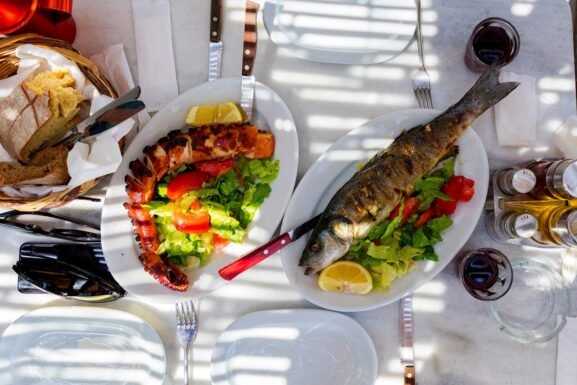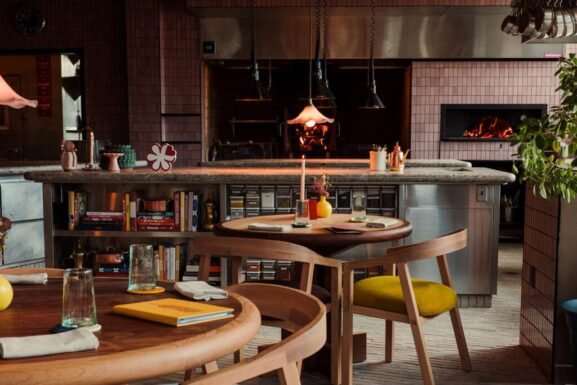The Best Glasses for Champagne
New job! New husband! Finally got off the waitlist at Dartmouth!
Congratulations, friend, let’s break out the bubbles.
Whether your taste runs to vintage Champagne, a sprightly Sekt or vivacious Crémant, there’s something undeniably celebratory about sparkling wine.
But what to serve it in? Just as fizzy, at least in the wine industry, is the debate about what’s best for sipping your sparkling wine of choice.
A Brief History of Champagne Glasses
For ages, the coupe reigned, and today little suggests Jay Gatsby-opulence and jazz age esprit de corps than a tower of them overflowing with Champagne.
By the ’60s, however, the flute was in ascendance, its long body and stem ideal for focusing the effervescent quality of the wine—and permitting partygoers a few spins around the dance floor.
Today, however, those who take their aromatics as seriously as their revelry, find themselves turning to white wine glasses, and even universals when it’s time to for a spirited salud. “To me, it’s a no brainer,” says sommelier and head honcho at & Sons Hospitality Group Andre Mack. “To make good sparkling you have to make good wine first. And you need a wine glass to really taste it.”
To understand how a glass actually impacts the sparkling wine drinking experience, we asked a trio of experts about the various vessels associated with bubbles are good for, what they don’t do particularly well and when you should just chill out and swig away.
Which Glasses Should I Consider for Champagne?
Unless you’re a devotee of the Chambong, for which it must be said you simply cannot find a faster way to shotgun a glass of Champagne, you’ve got three main glasses to choose from—the coupe, the flute and some kind of white wine glass.
The Coupe
You’ve heard the famous, fabled, fallacious story that the coupe glass was modeled on Marie Antoinette’s breast, n’est-ce pas? Or the version that says it was Helen of Troy? Or Madame de Pompadour? The coupe came into vogue as a Champagne glass in the 17th century and it’s very unlikely that this titillating bit of apocrypha has any real basis in the anatomy of any aforementioned nobility. (The same cannot be said of the Kate Moss Coupe.)
The coupe did however have a centuries-long run as the Champagne glass. The vessel is wide at the mouth to allow aromas to develop, which is grand, but its design demerits start to pile up as soon as you get to serious tasting.
“The coupe is cute, very charming and useless,” says Raj Vaidya, a sommelier and director of operations for La Fête du Champagne.
“The broader opening gives a bit more access to aromatics than a flute,” he says, but notes that sparkling wine tends to warm up and go flat more quickly in a coupe. “And you can’t swirl a coupe because it will spill all over the place.”
Brenna Gilbert, owner of the New York City bubbles palace Champers Social Club, is equally down on coupes, though she loves them in a Champagne tower. Her word of caution: “Never drink from the bottom glasses.”

The Flute
Steel yourselves, for the Champagne flute has a few critics. According to the experts I spoke to, this shape leaves much to be desired when it comes to showcasing the taste of sparkling wine, although it has redeeming qualities depending on the setting in which it’s served.
“The reason I really don’t believe in the flute is that it inhibits the opportunity for wines to really express themselves,” says Vaidya. “Flutes bring the focus to effervescence, but that tight, long, flute-shape bowl doesn’t give wine much of a chance to express itself except for the bubbles. Perhaps it’s good for Mimosas.”
Gilbert was equally morose at the flute’s ability to actually showcase the fine and vintage Champagne that she pours in her restaurant.
“We have a lot of wine meant to be explored and enjoyed, and I always try to steer people away from flutes,” she says. “The only time we bring in flutes is when we host events. They’re perfect for toasts, lend themselves to being carried on trays and are perfect when you want that heady long finish, which can be great in a toast setting.”
Mack at least grants that flutes feel festive, “like getting dressed up to go to a masquerade party.” But he also offers a truly daming observation on the flute for any serious fan of sparkling wine.
“I’ve never been to any Champagne house in France or any producer where we were tasting out of flutes,” he said. “So you kind of go wait, I’m always being served Champagne in flutes, yet all throughout the process of making and evaluating sparkling wine, in the lab and when they’re putting it in bottles, the producers all use white wine glasses.”

The Tulip-Shaped Wine Glass
This is where the experts I spoke with agreed again. If you really want to smell, taste and show off that Champagne, a tulip-shaped white wine glass is best.
At home, Vaidya uses either a Glasvin or Zalto universal glass.
At Champers, Gilbert relies on a fleet of Riedel white wine glasses. “We break a thousand a week, they’re so fragile,” she quips. “But that’s the cost of a nice wine glass for nice wine!”
At his Brooklyn ham bar & Sons, Mack reckons that 90% of what he pours is red, but he happily serves Champagne in Josephine No3 by Josephinenhutte.
Can’t I Just Enjoy My Champagne Regardless of the Glass?
In a word, yes.
“What’s cool about wine is that it’s all situation-based,” Mack says. Which means if all the oenophile beard stroking is getting in the way of celebrating that 25th anniversary, bachelorette party or commonplace Sunday brunch, then the problem isn’t the glass.
“Nobody’s at this party to hear me say anything about wine glasses,” Mack laughs, making sure to mention that if you’re at a wedding or if a neighbor pours you a glass of bubbles in a flute, it’s almost certainly poor form to complain. If coupes are what they have, coupes are what he’s drinking out of. “Wine guy going to ask for a different glass? That just isn’t cool,” he says.
More Champagne Coverage

In the shop
Zalto Denk’Art Champagne Glass
In Stock | $78
Published: August 21, 2024

